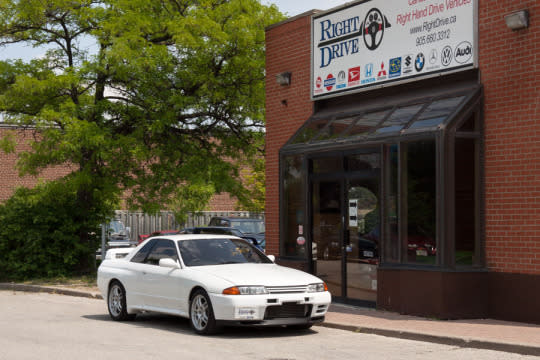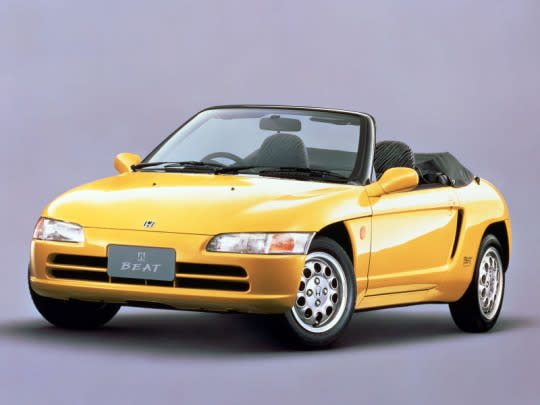9 Future Collector Cars Turning Legal For Import In 2016
As stories of crushed Skyline GT-Rs and Minis have shown, the U.S. government shows no mercy towards illegal grey-market imports. It’s why the 25-year threshold is a cherished milestone to collectors and enthusiasts—when the long-forbidden cars no longer need to adhere to federal safety standards.
The 25-year threshold is especially interesting now because it opens up cars made during the Japanese bubble era, a time when Japanese automakers prodigiously churned out performance cars in the midst of a stock and housing boom. Most of those cars never saw a release stateside, and since the majority of Japanese people nowadays have lost interest in old enthusiast cars, many are now available at reasonable prices.
But buying your dream grey-market car isn’t as simple as finding a ’91 model on Goo-net, and then shipping it in a container. Listen to Brian Jannusch, sales manager at International Vehicle Importers from Ontario, Calif, a company that sells grey-market cars and handles all the bureaucratic hurdles to make them compliant.
“A common misconception is that all 1991 cars are eligible for import at once,” said Jannusch. “For example, a car manufactured in June of 1991 is not eligible for import until June of 2016.”
There’s also a myriad of paperwork needed to bring the car in and register it in your state, including customs entry forms, DOT and EPA entry documents, which you can handle yourself or rely on a registered importer. “When beginning the search for a grey-market car we stress the importance of working with a reputable importer with a proven track record,” Jannusch says. “There are a lot of things that can go wrong if important details are overlooked which could cause your car to be refused entry to the U.S. or cause extensive delays.”
The same regulations also apply to cars from Canada, unless it’s a model identical to a model certified in the United States, where you can obtain a letter of compliance from the manufacturer.
Unfortunately for those of us who live in California, there’s the additional hurdle of making it CARB compliant. Jannusch recommends a car that’s “near stock and in 100 percent perfect running order,” which is then sent to a lab for further emissions modifications. “We have worked out a deal with the lab that does the work to give our customers a substantial discount. With a previous price tag of around $15,000 we can now offer compliance work to our customers for right around $10,000.”
One tip about importing from Japan–throw out your definition of “low mileage,” because cars there don’t get a lot of highway miles, especially if they’re from a metropolitan area. So that “cherry” 90,000-mile car from Tokyo might have racked up the miles those slogging through gridlocked Shinjuku traffic, getting heat soaked in sweltering summer weather with 90 percent humidity.
Still willing to take a plunge? Here are some collectible cars now legal for import for 2016, both from Japan and Europe. These cars have either lived theirs years in relative obscurity, or have only started to appreciate, making them relatively affordable.

Nissan Figaro
Nissan produced 20,000 of these chic, retro convertibles exclusively for the Japanese market, which could only be bought through a random lottery selection. Based on the B-segment March, it was powered by an anemic 75-horsepower 1-liter engine paired to a 3-speed automatic, but had a surprisingly upscale interior, with standard leather seats. Although there are a couple dozen examples for sale in Japan, prices have only started to appreciate to its original price of 1,870,000 yen (about $14,500 in 1991), and they now average at $8,000.

Photo: rightdriveusa.com
Nissan Skyline GT-R N1
Skyline GT-Rs saw prices skyrocket when the ’89 model became available for importation to the U.S., and what used to be $5000 budget tuner cars now command prices above $20,000. The Nismo version can exceed $50,000, and the quicker N1 is now available for import, likely with an even higher premium due to its rarity. A lightweight version akin to a Porsche RS, the GT-R N1 has no ABS, AC, or rear wipers and comes with upgraded cooling along with a slight power bump. Also, if you’re in the market for a regular GT-R, know that the mid-cycle-refresh model produced after August 1991 is over 120 pounds heavier, thanks to the added side impact beams.

Alpina B12 5.0
Although a V-12-powered BMW 8 Series can be had for the price of a stripped down Mitsubishi Mirage, the notoriously expensive maintenance costs keep casual enthusiasts away. For those that want a more exclusive money-pit, there’s the Alpina B12 5.0, based on the BMW 850i. The specs were underwhelming even back then—it was only available with a four-speed slushbox and went from zero to 62 in 6.8 seconds—but Alpina made only 97 of them, and the rarity coupled with its beauty mean they can only increase in value. One recently sold for $75,000.


 Yahoo Autos
Yahoo Autos 